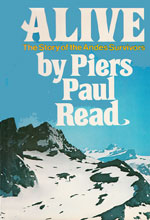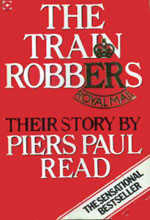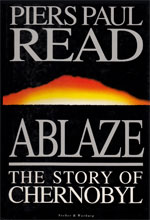Reportage
Alive. The Story of the Andes Survivors. Lippincott & Co, New York. 1974.
 On 12 October, 1972, a Fairchild F-227 was chartered from the Uruguayan Air Force by the Old Christians Club to fly its rugby team from Montevideo to Santiago in Chile: friends and relatives of the players had bought spare places on the plane. Bad weather delayed the flight for 24 hours at Mendoza on the eastern side of the Andes; but the next morning, on 13 October, it was resumed. Flying through cloud, and losing altitude in a series of downdrafts, the plane hit the summit of a mountain and, losing the tail, tobogganed down the side of a mountain before coming to a stop in thick snow.
On 12 October, 1972, a Fairchild F-227 was chartered from the Uruguayan Air Force by the Old Christians Club to fly its rugby team from Montevideo to Santiago in Chile: friends and relatives of the players had bought spare places on the plane. Bad weather delayed the flight for 24 hours at Mendoza on the eastern side of the Andes; but the next morning, on 13 October, it was resumed. Flying through cloud, and losing altitude in a series of downdrafts, the plane hit the summit of a mountain and, losing the tail, tobogganed down the side of a mountain before coming to a stop in thick snow.
A number of the crew and passengers were killed instantly, but a majority survived – some of them unscathed. With its white roof, the plane was invisible from the air and after ten days the survivors heard over a transistor radio that the search by their rescuers had been called off. Unable to move because of the deep snow, debilitated by the extreme cold, and with no food, the decision was taken to eat the flesh of the dead bodies in order to survive.
Alive records from the account of the survivors themselves how they formed themselves into an ordered society, distributing tasks according to individual skills and degrees of physical fitness. Leaders emerged who had never been leaders before. All clung to life with an extraordinary tenacity and ingenuity. After sixty days, when the snow had partially melted, the designated `expeditionaries’, Nando Parrado and Roberto Canessa, set out to cross the formidable mountain range, the Andes, and get help.
Awarded the Thomas More Medal for ‘the most distinguished contribution to Catholic literature’.
‘ One of the classic survival stories of all time – a story of the will to survive against impossible odds’.
Daily Mail
‘A classic in the literature of survival.Newsweek
‘A great book….an incredible saga. Read’s accomplishment in recording a struggle both physical and spiritual is superb’.
Philadelphia Inquirer
‘Terrifying…exciting and hugely entertaining’.
New York Times
‘More than an adventure story… An intimate, unglorified account of the fear, tensions, and practical problems of people who want to live… Not to be missed’.
Denver Post
‘An extraordinary book… Read writes in a sharply honed documentary style that is sometimes intensely dramatic, sometimes the more effective for being deliberately underplayed’.
Publishers Weekly
‘One of the classic epics of how men interact in the face of near certain death’.
The Village Voice
‘Flawless…superb…. A testimonial to the durability and determination of young men who might have chosen to die and simply would not’.
Detroit Free Press
‘No one will come away unmoved by this book and no one will be able to put it down’.to top
The New Republic
The Train Robbers. W.H. Allen/ Secker & Warburg, the Alison Press. London,1978
 On Thursday 8 August, 1963, fifteen masked men stopped the night mail train from Glasgow to London and robbed it of £2.5 million pounds. It was by far the largest theft in British history and thought particularly heinous because robbing the Royal Mail was tantamount to an assault on the state.
Experienced detectives from Scotland Yard, aware that only a handful of criminals were capable of mounting an operation on this scale, tracked down and arrested some of the perpetrators. They were tried, convicted and given exemplary sentences for what the judge described as `an act of warfare against the community.’
On Thursday 8 August, 1963, fifteen masked men stopped the night mail train from Glasgow to London and robbed it of £2.5 million pounds. It was by far the largest theft in British history and thought particularly heinous because robbing the Royal Mail was tantamount to an assault on the state.
Experienced detectives from Scotland Yard, aware that only a handful of criminals were capable of mounting an operation on this scale, tracked down and arrested some of the perpetrators. They were tried, convicted and given exemplary sentences for what the judge described as `an act of warfare against the community.’
Some of the Train Robbers escaped immediate arrest by fleeing abroad. One of the ring-leaders, Buster Edwards, made contact with the network established by the Nazi commando, Otto Skorzeny, to help war criminals escape from Europe after World War II. He was smuggled out of England with his family and given plastic surgery to change his appearance before moving to Mexico City.
The punitive sentences did not prove popular: the British public felt some sympathy for the gang who had cocked a snook at the establishment, and fugitives such as Buster Edwards and Ronnie Biggs provided rich fodder for the tabloid press. The Train Robbers, however, goes more deeply into the workings of London’s criminal culture with its corrupt detectives, venal lawyers, and the varying profiles of the robbers themselves ranging from crafty chancers to murderous psychopaths.
‘Read’s version is much the best and most detailed…he handles it very skilfully spinning it out as a cliff hanger…what is really useful is the social picture he gives of the criminals themselves’.
Observer
‘A clear, cleverly constructed and often humorous account of the robbery, its planning and aftermath’.
The Economist
‘Enjoyable and skilfully organised…he brings into a play a remarkable talent for the orderly arrangement of a confusing mass of facts and an outstanding ability to sustain a forceful narrative drive…the result is rather like a novel by Frederick Forsyth’.
Sunday Times
‘It is a fascinating picture; a spellbinding book’.to top
The Washington Star
Ablaze. The Story of Chernobyl. Secker & Warburg, London, 1993
 On 26 April, 1986, the No 4 reactor at the Cherobyl Nuclear Power station north of Kiev in the Ukraine was due to be close down for routine maintenance. Engineers planned to take advantage of the shut-down to conduct an experiment. The result was a thermal explosion which blew off the top of the reactor and spewed out a cloud of radioactive debris.
On 26 April, 1986, the No 4 reactor at the Cherobyl Nuclear Power station north of Kiev in the Ukraine was due to be close down for routine maintenance. Engineers planned to take advantage of the shut-down to conduct an experiment. The result was a thermal explosion which blew off the top of the reactor and spewed out a cloud of radioactive debris.
How did the accident occur? What was done in its aftermath? What was its effect on the development of nuclear power and the political unravelling of the Soviet Union? Ablaze opens with an account of the genesis of nuclear power in the Soviet Union when Stalin instructed Beria to do what was necessary to produce an atomic bomb. A network of gulags and unnamed cities were created under the auspices of the euphemistically named `Ministry of Medium Machine Building’ and in July, 1949, the first nuclear explosion took place in Ustryurt in the desert of Kazakhstan.
Nuclear power for the generation of electricity was now adopted with enthusiasm in the Soviet Union: it demonstrated the triumph of a society moulded by scientific socialism. But the flaws in the Soviet system permeated its nuclear industry, and the accident at Chernoby, with the fatal delays and subsequent cover, came to epitomise the failure of Communism and contributed significantly to its demise. The story has villains but also heroes – engineers, soldiers, helicopter pilots who showed extraordinary courage in dealing with the accident’s aftermath. Ablaze tells their story too.
‘There are not really very many outstanding books about communism in the Soviet Union. There are, however, some classics. Piers Paul Read’s account of Chernobyl is, in my opinion, among them’.
Norman Stone, The Times
‘Piers Paul Read tells the story of Chernobyl brilliantly. If you read only one book this year, Ablaze should be it’.
Gerald Kaufman, Manchester Evening News
‘The tale of the nuclear disaster at Chernobyl is told with uncommon depth and vividness. Piers Paul Read, just as he did in the bestseller Alive, takes us through the accident, minute by minute. The result is a book that is part thorough history, part techno-political thriller’.
Time
‘Fascinating and compelling’.to top
Jonathan Porritt